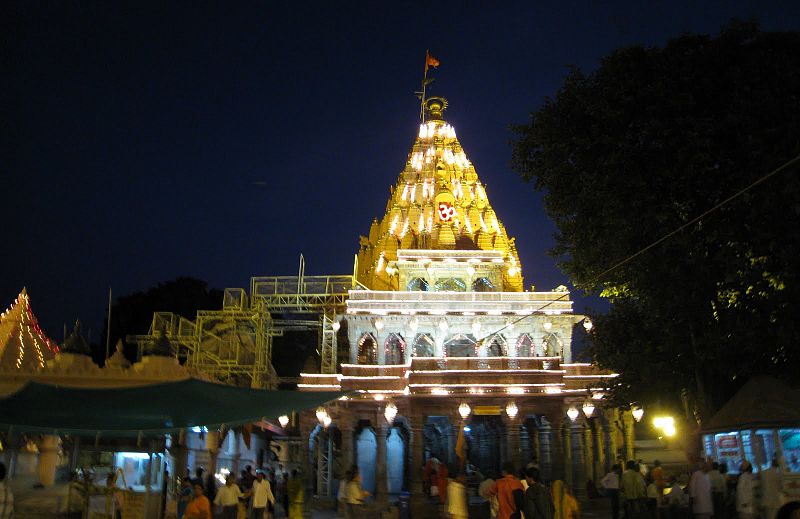Ujjain, along with Mandu and Omkareshwar, is part of Madhya Pradesh’s Golden Triangle. This holy city is considered one of India’s seven most sacred cities, making it one of the most popular Hindu pilgrimage destinations. Ujjain is primarily associated with Lord Shiva in the fierce form of Lord Mahakal, the destroyer of all elements who protects the city.
Ujjain as a city can be traced back to around 700 B.C., when it was known as Avantika, the capital of the Avanti kingdom, as mentioned in the Hindu epic “The Mahabharata.” This thriving kingdom was on the trade route connecting north and south India. The city was taken over by the first Mauryan emperor, Chandragupta, in the 4th century B.C. and remained important.
Ujjain appears in both ancient and modern literature. The city finds mention in the work “Meghaduta” by the great 5th-century Indian classical Sanskrit poet Mahakavi Kalidasa, who was a poet in the court of king Vikramaditya. In the early 20th century, celebrated British novelist E.M. Forster visited the area and wrote about it.
Though visiting temples is one of the best things to do in Ujjain, the city has got much more in store for the visitors who are not religious. In this post we shall discuss 12 best things to do while visiting Ujjain.
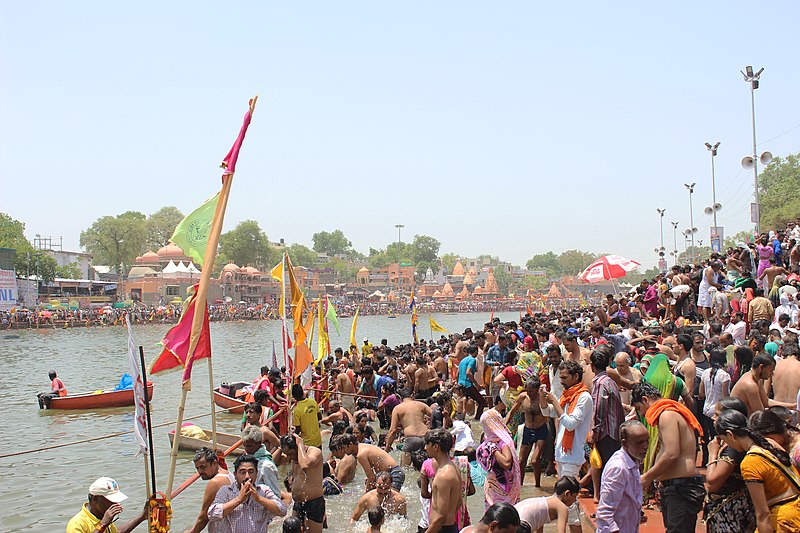
Post Contents
1. Attend the Kumbh Mela
If you happen to visit Ujjain during the Kumbha Mela time, then you are very lucky and you should not miss the opportunity to take part in the largest religious spectacle in the world. According to Hindu scriptures, Ujjain is one of four holy places where drops of amrita (the nectar of immortality) fell during the legendary Samudra Manthan battle between gods and demons.
Every 12 years, the Kumbh Mela festival is held in each of these places, the others are Haridwar, Allahabad and Nashik. Because of the specific configuration of planets, the festival in Ujjain is called the Simhastha Kumbh Mela, and the next one will take place in 2028. It is the world’s largest religious gathering, attracting millions of pilgrims and sadhus (Hindu holy men) every day. Make sure you make most of the Kumbha Mela when in Ujjain.
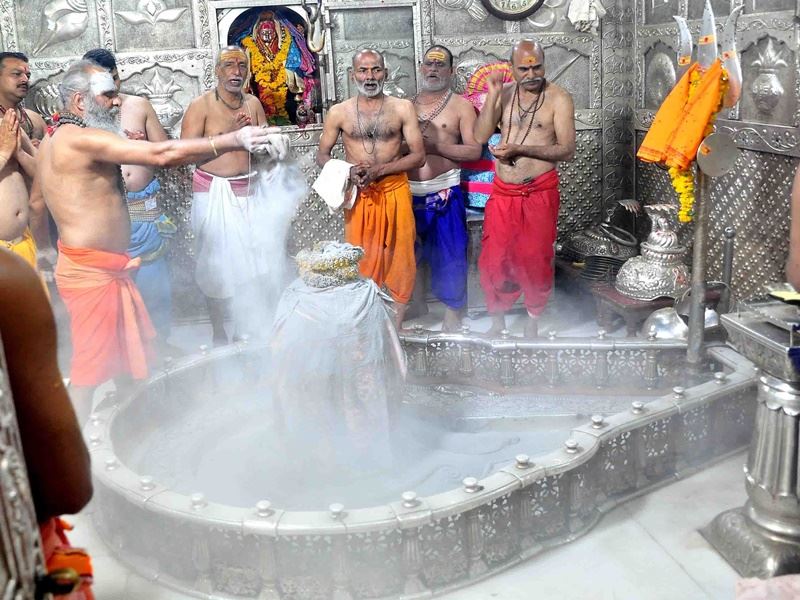
Related post: Your Ultimate Guide to visit Mahakaleshwar Temple in Ujjain
2: Participate in the Bhasm Aarti at Mahakal Temple
Anyone who is in Ujjain is certain to visit the Mahakaleswar Jyotirlinga. It’s a good idea if you grab the opportunity of Ujjain visit by participating in the unique Bhasm Aarti that takes place at dawn at the Mahakal Temple. Infact, the day begins with Bhasm Aarti at the Mahakal Temple. There is an interesting story to this mysterious tradition at the Mahakal temple.
Legend has it that in mythological times, a demon named Dushan wreaked havoc in the city of Ujjain. People then begged Lord Shiva to save the town. On the insistence of the townspeople, Lord Shiva killed Dushan and settled here as Mahakal. According to legend, Baba Bholenath adorned himself with pollution ashes of the dead. As a result, Mahadev is still adorned with ashes today.
There are certain rules you must follow while attending Bhasm Aarti. Men are only allowed to wear dhoti and can only watch this aarti. Only the Mahant of the Bhartiya Mahanirvani Akhara and the representatives have the right to perform Aarti. On the other hand, entry into the sanctum sanctorum is prohibited for women during this period. This is because at this time the Lord is in a formless form and the darshan of Lord Shiva in this form is prohibited for women. But people who come to see Bhasma Aarti can participate in this Aarti by sitting in Nandi Mandap, Ganesh Mandap and Kartikeya Mandap.
However rituals have changed over time. The mahants here claim that Lord Mahakal’s aarti was performed with pyre ashes many years ago. The entire area where the Mahakal temple now stands was once a cremation ground. However, this has changed over time, and the ingredients for Baba Mahakal’s Bhasma Aarti are now made from cow dung.
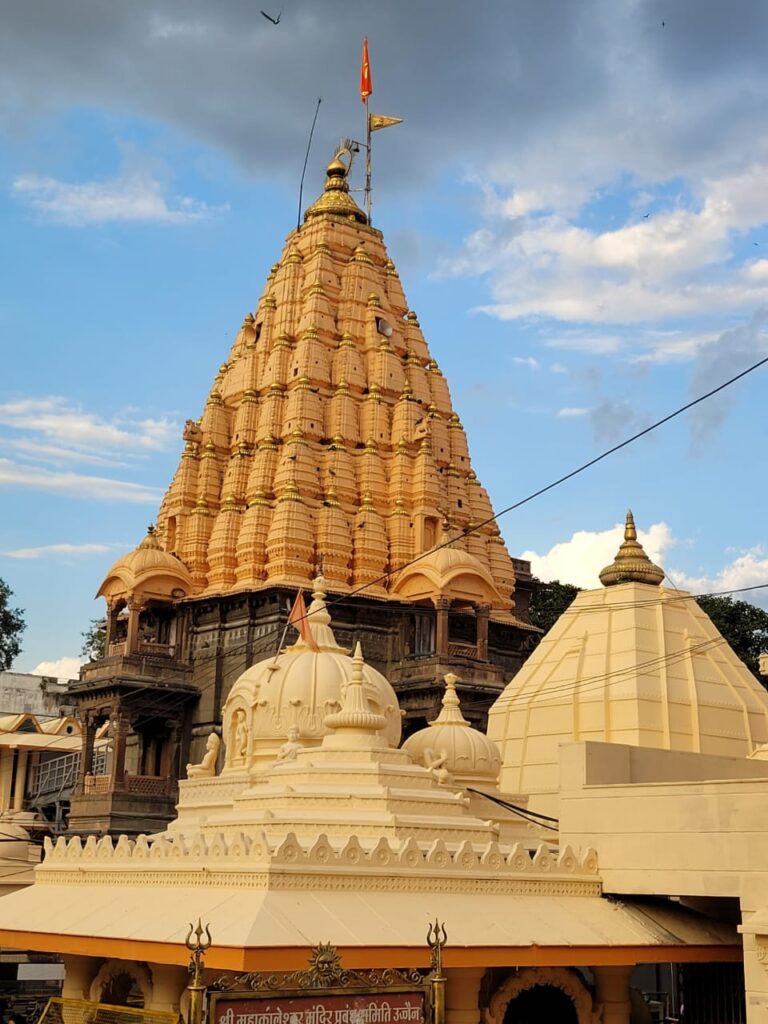
3. Go Temple Hopping
Ujjain is best known for its temples, and each one has a mythological story associated with it. Indeed, there are so many temples that it is very difficult to visit them all in a single day. The main temple is the Mahakaleshwar temple which houses Lord Shiva. The massive idol of the beloved elephant-headed god at Bada Ganesh Mandir opposite the Mahakal temple leaves you worth admiring.
Harsiddhi Mata temple, located across the Rudra Sagar lake on the way to Ram Ghat, is another notable temple in Ujjain which is a Shakti Peeth.. The Marathas restored the temple in the 18th century, and its two pillars are beautifully illuminated with hundreds of lamps during the Navaratri festival.
You also come across a temple where devotees offer alcohol to Lord Kal Bhairav which is across the Shipra River, as part of a tantra ritual. He is an intimidating manifestation of Lord Shiva who helps to protect the city and enjoys Royal Stag whisky.
Gopal Mandir in Ujjain’s main market area, Chintaman Ganesh temple, ISKCON temple, Mangal Nath Mandir, Gadhkalika Temple and Chaubis Khamba temple are among the other top temples which you must visit.
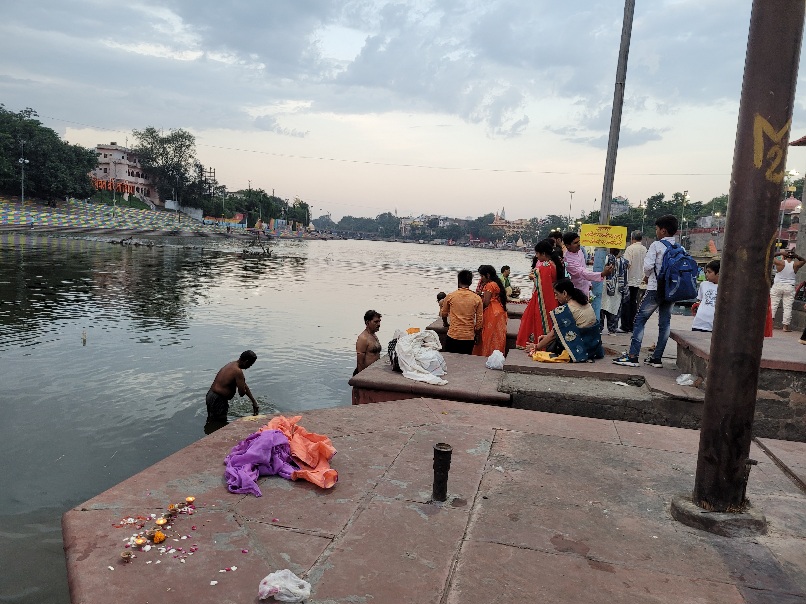
Do Read: Kaal Bhairav Temple of Ujjain: Shrine with the weird tradition of liquor offering
4: Observe Local Life by Shipra River
If you are not a religious person and not much interested in the religious significance of Ram Ghat, it’s still worthwhile to spend some time there to observe daily life by the river. The ghat stretches for about a kilometer along the river and can be walked from one end to the other.
All you need to do is to get up early and walk down to the ghat early in the morning that is really evocative. The sun’s rays warm the temples, the clang of temple bells vibrates through the air, and people perform their morning devotional rituals as you find yourself a quiet spot to sit and relax, and the hours will fly as you soak up the peaceful vibe.
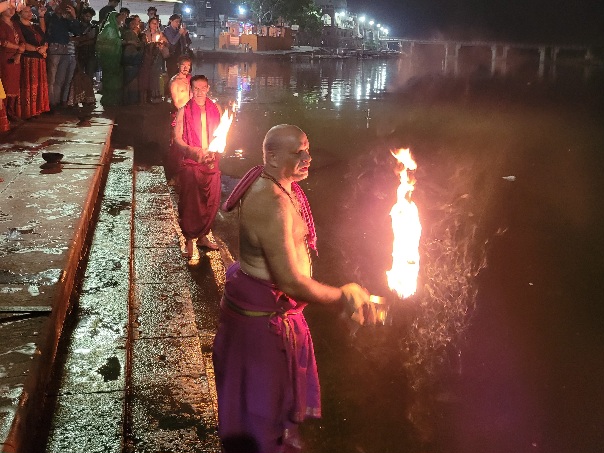
5. Take part in the Evening Aarti at Ram Ghat
This is another top thing that you must not miss when in Ujjain. You need to be at the Ram Ghat in the evening to witness this spectacle called Shipra Aarti. As the sun goes down, Ram Ghat comes alive with the mesmerising glow of earthen lamps, more bell ringing, and mantra chanting.
Every evening, a ritual known as Shipra Aarti is performed to honour the river. The lamps are floated down the river to Lord Shiva’s abode in the Himalayas. It’s an unforgettable experience filled with tangible divine energy that both soothes and uplifts. Hire a boat and sail down the river to get a different perspective.
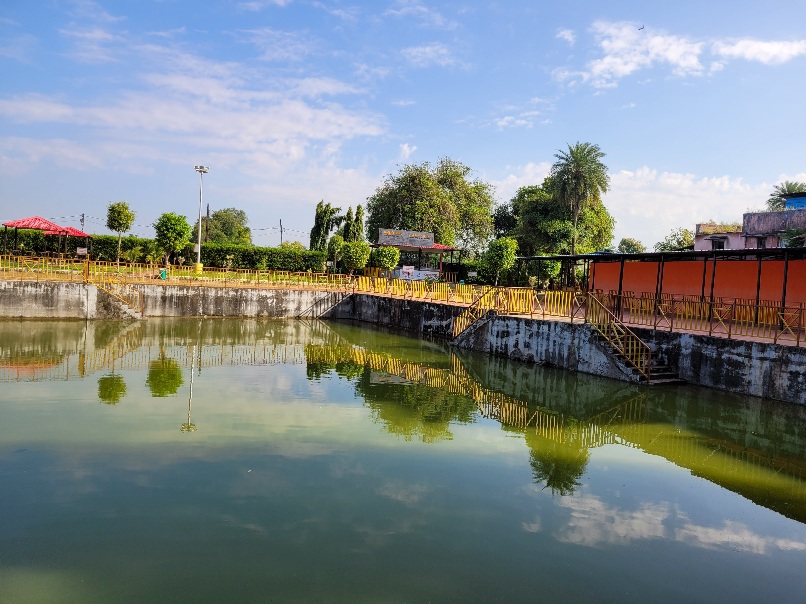
Also Read: Know Why Harsiddhi Mata Temple in Ujjain is a must-visit shrine
6. Visit the gurukul where Lord Krishna studied
If you are a spiritual seekers, then you will definitely appreciate a visit to Sandipani Ashram on your way to Mangal Nath Mandir. It belonged to Sandipani Muni, the guru who is said to have taught Lord Krishna. In fact, the ashram has been a renowned centre of learning for over 3,000 years! The current priests are claimed to be direct descendants of guru Sandipani. The ashram is also notable for housing a rare standing statue of Nandi (Lord Shiva’s vehicle, the bull).
Other attractions include a shrine dedicated to Sandipani Muni, an ancient Shiva temple, and Gomti Kund, a reservoir that supplies water to the ashram. It is said that Lord Krishna pressed his feet against the ground to bring water from the Gomti River. Other highlights of the place are where Lord Krishna washed his slate for writing and a set of footprints attributed to him.The ashram is still functional and conducts summer courses in the Vedas, specifically the Shukla Yajur Veda, every year from April to June.
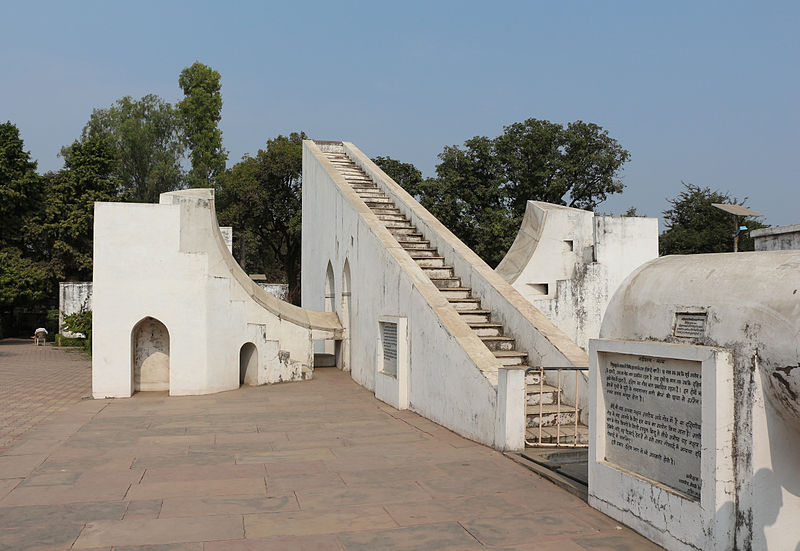
7. Gain knowledge about the Ancient Indian Astronomy at Vedshala
Ujjain is known for its strategic geographical location which is crucial for astronomical studies. Not only does the Tropic of Cancer pass through it, but it was also India’s Prime Meridian (zero degrees longitude) before the world’s official Prime Meridian was set at Greenwich in 1884. This was determined by ancient Indian mathematicians and astrologers way back when Ujjain was known as Avantika. It’s documented in the “Surya Siddhanta,” one of the earliest Hindu texts on astronomy written in the 4th century. Ujjain was a crucial center for mathematical and astronomical research in the 6th and 7th centuries
Unfortunately, invading Sultan Iltutmish from Delhi destroyed the city’s first observatory in 1235. The present one, known as Jantar Mantar or Vedshala, was built in the 18th century by Maharaja Sawai Jai Singh. It’s the only one of five observatories he built in India (the others are in Delhi, Mathura, Varanasi, and Jaipur), and it’s the only one that’s still functional. Its fascinating astronomical instruments work by casting shadows. Jantar Mantar is open daily and has a small entry fee. If you happen to visit the monument around noon on June 21, the summer solstice, the sun will move directly overhead and your shadow will vanish for a moment.
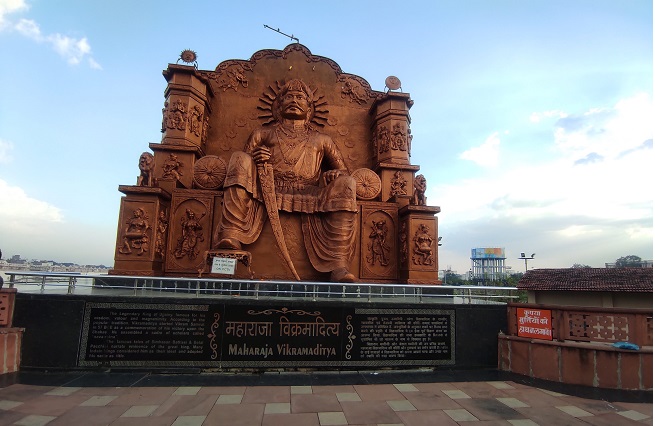
Must Read: Some interesting facts about the Mangalnath Temple of Ujjain
8. Revisit Simhasan Battiisi of King Vikramaditya at Vikram Teela
You come across Vikram Teela enroute your walk to Harsiddhi Mata Mandir after visiting Mahakaleswar Jyotirlinga. This is the place where King Vikramaditya used to hold his court and used to take important decisions and make judgements. The place now wears a new look and deserves a visit.
King Vikramaditya’s court has been recreated upon a raised platform in the middle of Rudrasagar lake and you need to cross a bridge to reach the Vikram Teela.The platform of Vikramaditya Teela has been built in a circle. In this platform, nine Navaratnas of the court of King Vikramaditya and the idol of the king have been installed. The king used to take big decisions only after taking the advice of these nine gems. The Navratnas include Betalbhatta, Amarsingh, Shanku, Kalidasa, Vararuchi, Ghatkharpar, Kshapanak, Dhanvantari and Varahmihira.
This statue of Maharaja Vikramaditya is 30 feet high. The statue is made of brass with a cost of ₹1 crore by Ujjain Municipal Corporation and ‘Simhastha Preparation Committee’. The statue is sculpted by Indore based sculptor Mahendra Kodwani. After seeing the idol of King Vikramaditya, you come down below where you can see the idols of 32 fairies and each has a story that you may read . From these stories, you can know about the generosity and intelligence of King Vikramaditya. The complex also boasts of some exquisite carvings in the wall that speaks highly of the rich cultural heritage of the Malwa region.
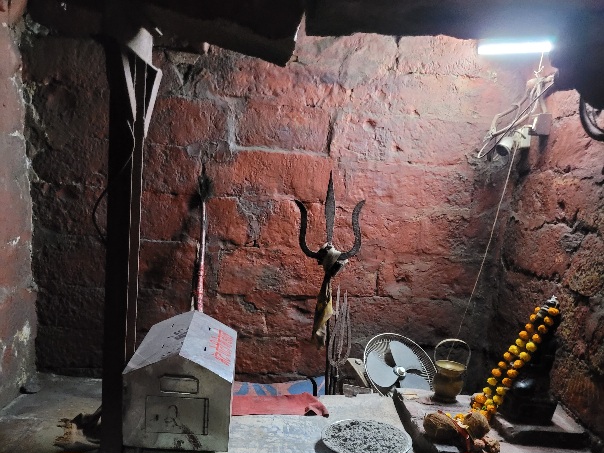
9.Discover scholar Bhartrihari in these caves of Ujjain
Bhartrihari caves, like other places in Ujjain, have a history. According to legend, these 11th century caves owe their name to Bhartrihari who was the step-brother of King Vikramaditya. It is said that when Bhartrihari decided to give up the worldly life, he came here in search of peace to continue his meditation. These caves eventually became his refuge, where he spent a good part of his life.
Bhartrihari was a highly educated man. He was a great scholar of his time. He also had a good understanding and knowledge of poetry. Many of his great works are still studied and researched by students and scholars today. His contribution to the Sanskrit language is enormous. You need to be very careful while visiting these caves as they have very narrow passages and are dark.
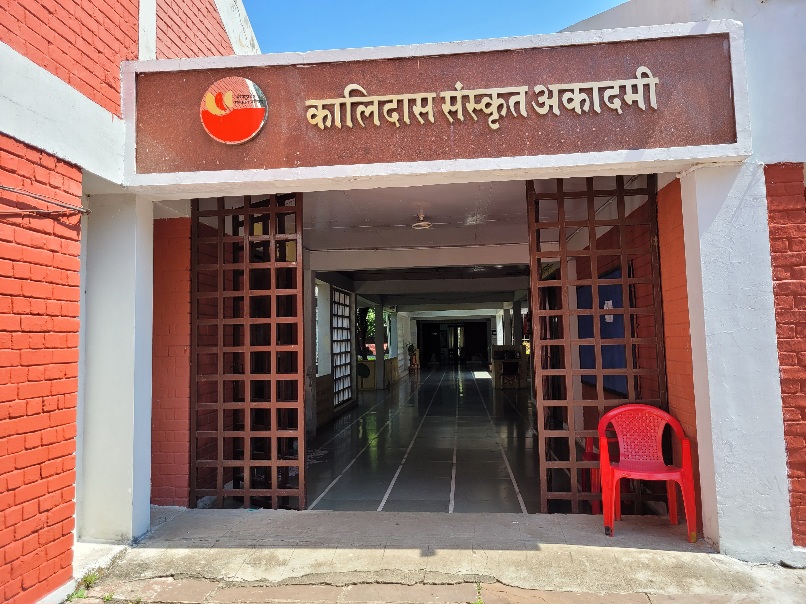
Do Read: Top places to visit enroute Rishikesh-Badrinath road trip
10. Explore Classical Sanskrit Literature and Arts at Kalidasa Academy
If you are a Sanskrit language and literature enthusiast, then Kalidasa Academy must feature in your itinerary of Ujjain. The academy was founded in 1978 by the Madhya Pradesh government to preserve the works of poet Mahakavi Kalidasa, known as the Shakespeare of India. The mission of the academy also includes research and promotion of Sanskrit classical literature and arts in general. The sprawling campus includes a public library with over 4,000 books (some of which are in English).
Paintings, sculptures, manuscripts, stage costumes, masks, and musical instruments are also on display in the academy. You’ll also find a garden mentioned in Kalidasa’s works. The academy holds a wide program of events such as workshops, plays, films, classical and folk music recitals, and the annual week-long Kalidasa Samaroh festival (usually in November each year).
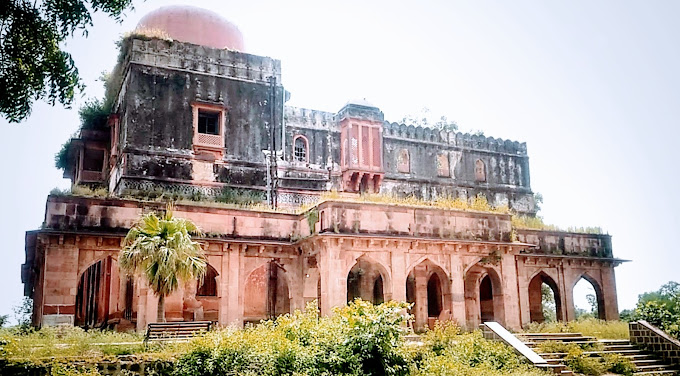
11.Appreciate the Persian Architecture of Kaliyadeh Palace
The remnants of the red sandstone Kaliyadeh Palace, built in the 25th century, are on the banks of river Shipra. It boasts outstanding domed Persian architecture and was constructed on the Shipra River during Mahmud Khilji’s rule as Malwa’s Sultan. You might imagine what Ujjain would have been like during this rich era, when the sultans rampaged through the area building palaces, with a little amount of imagination.
The Kaliyadeh Palace was visited by Akbar and Jehangir, two powerful Mughal emperors, according to inscriptions in one of the palace’s extensive corridors. Prior to being reconstructed in 1920 by Maharaja Madho Rao Scindia of Gwalior, the palace had been damaged in a conflict between the Marathas and Pindaris in 1818.
Also Read: 5 top places to visit near Badrinath
12.Try some Mouthwatering street food
Regional street food in Ujjain is an enticing combination of Rajasthani, Gujarati, and Maharashtrian delicacies. In the evenings, you can see dozens of snack-selling pushcarts in Tower Chowk, the large area next to the iconic clock tower of the city. Pani puri, bhel puri, vada pav, kachori, jalebi, samosa, poha, masala bhutta, several chaat varieties, sabudana khichidi, Western hot dogs, and ice cream are just a few of the numerous options available. A must-try is the ice gola, which is crushed flavoured ice covered in sweetened condensed milk. A foodie’s paradise!
The city is also famous for bhang thandai, a sacred substance revered in Hinduism and intimately linked to Lord Shiva. Be careful that it is prepared with cannabis paste even though it is readily available in Ujjain shops. The popular Indian travel and food show “Highway on my Plate” features the more than a century-old Sree Mahakaleshwar Bhaang Ghota, which is close to the temple and is located on Mahakaleshwar Road.
FAQ
Ujjain is one of the most sacred pilgrimage city on the banks of river Shipra. It is famous for the Mahakaleswar Jyotirlinga temple and the holy Kumbha Mela.
Winter is the best time to visit Ujjain. Months from October to February are the best to tour this sacred destination..
Devi Ahilyabai Holkar Airport of Indore is the nearest airport to the city of Ujjain. Airport is only 55 km away from Ujjain.
The top sightseeing places in Ujjain are Mahakaleshwar Jyotirlinga, Kal Bhairava Temple, Ram Ghat, Harsiddhi Temple, Kaliyadeh Palace and many other temples and monuments..
The major source of intra-city transportation in Ujjain is via shared auto rickshaws given the fact that they cost you not more than Rs 10 and take you to your preferred destination comfortably.. Another source is the normal autorickshaw, which is a tad bit costlier.Also, there is the online cab services like Ola and Uber.

